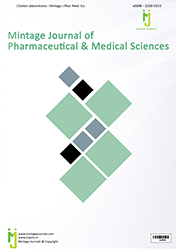HARNESSING NATURE'S BOUNTY: PHARMACOGNOSY IN DERMATOLOGY
Commentary - (2023) Volume 12, Issue 3
Description
The field of dermatology, focused on the study of skin and its associated conditions, has witnessed a remarkable transformation in recent years. One of the driving forces behind this evolution is the integration of pharmacognosy, a discipline dedicated to the exploration of bioactive compounds from natural sources, into dermatological research and practice. This interdisciplinary approach has opened new vistas in dermatology, offering a wealth of innovative solutions for skin disorders. By leveraging the rich diversity of natural compounds found in plants, marine organisms, and other biological resources, pharmacognosy in dermatology is shaping the future of skin care and treatment.
Plants have long been revered for their therapeutic properties, and their contributions to dermatology are no exception. Extracts from botanical sources such as aloevera, calendula, and chamomile have gained prominence for their anti-inflammatory, wound-healing, and moisturizing properties. Aloevera, for instance, is celebrated for its soothing effect on sunburned skin, making it a staple in after-sun products. Calendula, derived from marigold flowers, demonstrates remarkable wound-healing capabilities, making it invaluable in treating various skin injuries and irritations. Chamomile, with its anti-inflammatory and anti-irritant properties, finds extensive use in soothing sensitive and allergy-prone skin.
The oceans, teeming with biodiversity, harbour an array of bioactive compounds with tremendous potential for dermatological applications. Marine organisms like sponges, sea squirts, and algae have yielded a treasure trove of compounds, each with unique properties beneficial to skin health. For instance, compounds derived from sponges exhibit significant anti-inflammatory and antioxidant activities, making them promising candidates for anti-aging formulations. Sea squirts, with their rich source of enzymes and peptides, show potential in wound healing and tissue regeneration. Algae, a powerhouse of vitamins, minerals, and antioxidants, contribute to the revitalization and nourishment of the skin.
Inflammation lies at the core of many dermatological conditions, from acne to eczema. Pharmacognosy offers a wide range of natural anti-inflammatory agents that can effectively alleviate skin inflammation without the side effects associated with synthetic drugs. Turmeric, containing the active compound curcumin, is a prime example. Its potent anti-inflammatory properties have been harnessed to combat conditions like psoriasis and rosacea. Similarly, green tea extracts, rich in polyphenols, exhibit anti-inflammatory and antioxidant effects, making them a valuable addition to topical formulations for various skin disorders.
Antioxidants play a pivotal role in safeguarding the skin from oxidative stress, a major contributor to premature aging and skin damage. Natural sources such as berries, vitamin C-rich citrus fruits, and green tea are replete with antioxidants that neutralize free radicals and promote skin vitality. By incorporating these natural wonders into skincare products, dermatologists harness the power of nature to bolster the skin’s resilience against environmental aggressors.
Pharmacognosy, with its focus on the exploration of bioactive compounds from natural sources, has emerged as a transformative force in dermatology. Through the integration of plant-derived extracts, marine compounds, and natural antioxidants, dermatologists are revolutionizing skin care and treatment. This holistic approach not only addresses a wide spectrum of dermatological conditions but also offers a safer, sustainable alternative to synthetic drugs. As we delve deeper into the realm of pharmacognosy in dermatology, we unlock the boundless potential of nature’s bounty in nurturing healthy, radiant skin. Embracing this paradigm shift, we embark on a journey towards a more harmonious relationship between humanity and the natural world, where the wisdom of the earth enriches the canvas of our skin.
Acknowledgement
The authors are very thankful and honoured to publish this article in the respective Journal and are also very great full to the reviewers for their positive response to this article publication.
Conflict Of Interest
We have no conflict of interests to disclose and the manuscript has been read and approved by all named authors.
Author Info
Xiomar Talmy*Received: 29-Aug-2023, Manuscript No. mjpms-23-117141; , Pre QC No. mjpms-23-117141(PQ); Editor assigned: 31-Aug-2023, Pre QC No. mjpms-23-117141(PQ); Reviewed: 14-Sep-2023, QC No. mjpms-23-117141; Revised: 19-Sep-2023, Manuscript No. mjpms-23-117141(R); Published: 26-Sep-2023, DOI: 10.4303/2320-3315/236053
Copyright: This is an open access article distributed under the terms of the Creative Commons Attribution License, which permits unrestricted use, distribution, and reproduction in any medium, provided the original work is properly cited.

ISSN: 2320-3315
ICV :81.58

